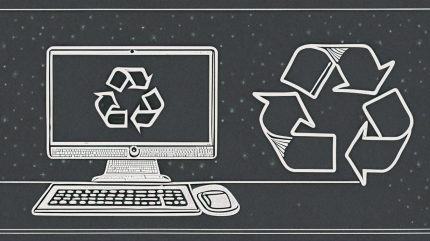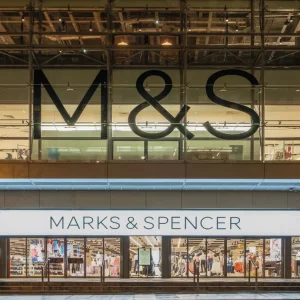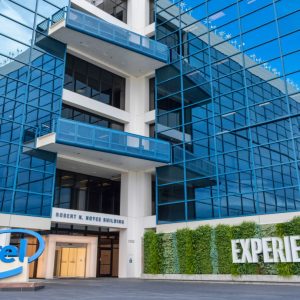
Come 14th October 2025, Microsoft is going to end of life (EOL) Windows 10, which means businesses have just over a year to upgrade before losing security updates and technical support. And, while businesses delaying system migrations is hardly a new phenomenon, this time many seem to be cutting it exceptionally fine. The later businesses leave things like application compatibility testing, the more likely things are to be rushed through on a compressed timeline. The more compressed the timeline, the more likely they are to look for areas to cut corners – one of the biggest being device replacements (hot-swaps) rather than in-place upgrades.
The latest research shows that the lack of planning is a reality. A recent survey of organisations showed that, with only 13 months to go, less than a third (31%) of devices at these firms have been upgraded to Windows 11. This suggests that, instead of upgrading perfectly serviceable machines, many organisations may look to simply junk and replace them. Already, analysts have predicted that unless something drastic changes, Windows 10 EOL will generate around 480m tonnes of physical e-waste. So, are we heading for an environmental disaster? And, if so, why, and what can be done to stop it?
Why is the end of Windows 10 is taking so long?
Migrating operating systems is a thankless task. Even when it goes smoothly, it requires IT teams to incur substantial costs and disrupt users to drive forward with something that doesn’t offer much in the way of business results or is driven by specific business needs, especially since users largely come back to the same desktop look and feel they had previously.
And things often don’t go smoothly – like playing Jenga, swapping out the foundational brick can sometimes cause the entire stack above to collapse. A botched migration can result in system crashes, unusable applications, and dozens of other unpleasant issues. For example, in my prior role at a major financial services firm in Hartford, we not only needed to upgrade the OS, but all the plug-in components, browsers, agents, and application versions. In total, it required remediating or retiring over 2,000 applications.
All told, changing operating systems isn’t just an OS upgrade – it’s a major undertaking to change almost everything the employee uses in their day-to-day role. Managing the process requires intensive planning and testing to make sure that everything still functions as expected and that business processes aren’t interrupted. For every endpoint, IT teams have to figure out if there is enough disk space, whether the model is compatible with the upgrade, and if the right capacity in terms of RAM, CPU, and graphics. And then the application work begins, determining if there are any blacklisted, incompatible, or unneeded applications that need to be removed beforehand. The to-list, in short, is endless.
Don’t just dump it
Faced with so many problems, the temptation for businesses is to simply junk older laptops in favour of new ones on the basis that employees like to have the most modern gadgets to play with and that newer models will perform better. This is particularly tempting since new devices can be pre-staged and tested, and users don’t need to wait for the in-place upgrade to complete.
The problem with this is that both suppositions are wrong. Firstly, most people want to work for companies that are practising sustainability and environmental responsibility. When surveyed, an overwhelming majority (76%) of people said they are happy to extend the life of their device in service of meeting sustainability goals.
Secondly, and more importantly, there is little evidence that things like increased CPU power makes any significant difference to the average employee in terms of their digital experience and research has found that only around 4% of devices currently being used are totally unable to be upgraded to Windows 11.
As for the other 96%, some could be upgraded immediately while the rest require only a small amount of modernization, i.e. renovating and repackaging of the hardware. Even small things such as removing bloatware or replacing an aging battery can extend the life of a laptop by several years. And this is not just an environmentally sensible choice, but also a financially savvy one too. To put it into perspective, for an organization with 10,000 devices, intelligent remanufacturing and reuse can save over 2.1m kilograms of carbon dioxide, the equivalent to the average annual emissions of 451 cars and as much as $6.2m in procurement costs.
You can’t fix what you can’t see
The key problem that businesses face in terms of remanufacturing is that they don’t have insight into which devices are eligible, what aspects need to be changed, or even whether the process has worked once it’s been done. So, IT errors on the side of caution and replaces every device to avoid the few that might need attention. All too frequently, your average IT department can upgrade a device, only to have it sent back a month later because key applications on it no longer work.
Without a clear overview of metrics such as energy consumption of a given device, hardware component consumption, and overarching digital infrastructure, IT cannot even begin a redeploy or remanufacturing process across an entire enterprise.
Therefore, one of the first things that enterprises should do to help manage the transition to Windows 11 in a sustainable way is to ensure that IT has visibility into which devices are viable for the upgrade, which ones still need to be migrated, what hardware or software adjustments might need to be made ahead of time, and whether the user experience post-migration is delivered as expected. To take some of this remanufacturing into their own control, devices that are deemed as viable can be retained and redeployed with very little effort after an initial set of new seed units are deployed.
Moreover, while this data is essential for a smooth operating system migration, it also establishes a baseline for environmental and sustainability metrics, meaning ‘Green IT’ isn’t just a one-off but can be an ongoing process of continual improvement.
We need to be better
Ultimately, companies junking perfectly serviceable devices because they don’t feel they have the time to go through a smarter migration process is both financially and ecologically problematic. It’s the digital equivalent of spending millions on new motorways without even checking to see if there is a traffic problem. Right now, there are likely over 220m devices that are destined for the dump that simply shouldn’t be.
The good news is that there is still time before the deadline for businesses to make better choices by giving IT the capabilities to effectively monitor, remanufacture, and migrate devices. And those capabilities buy the time necessary to plan, design, and deliver in a more ecologically and financially intelligent manner. But time is running out – businesses need to act now.
Tim Flower is the vice president of DEX Strategy at Nexthink and the co-host of the DEX Show Podcast, a show dedicated to technology and change-management professionals interested in improving the way we work.






